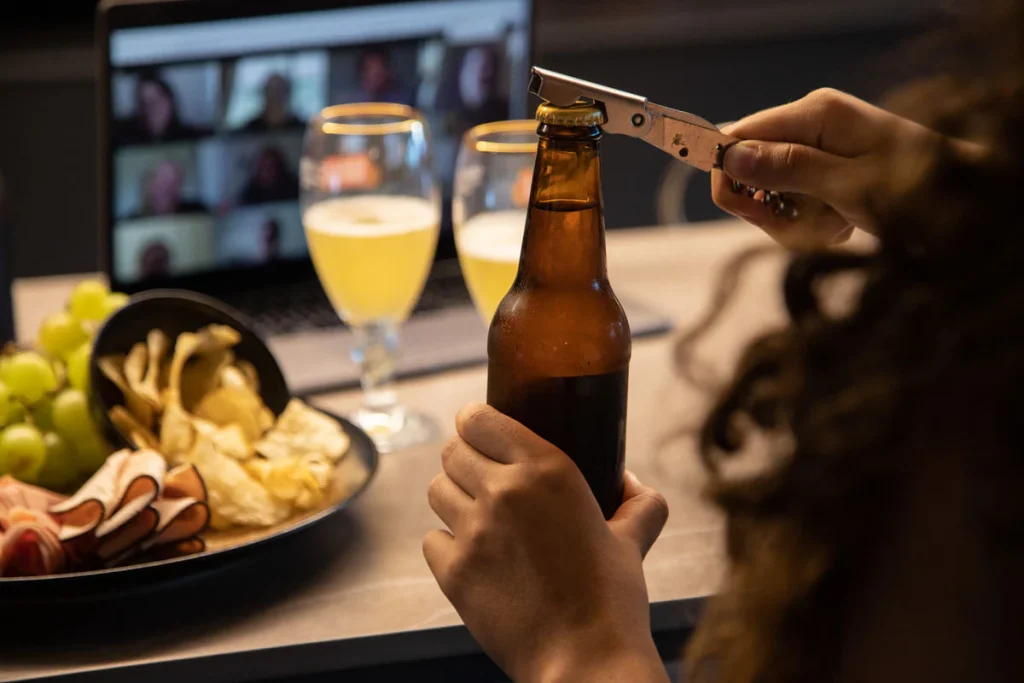Blog
Perfect Pairings: Matching Beer and Food Like a Sommelier
When it comes to pairing beverages with food, wine often gets the spotlight. But beer, with its vast array of flavors and textures, is just as versatile—if not more so. The art of pairing beer with food involves balancing flavors, contrasting elements, and enhancing the overall dining experience. Whether you’re hosting a dinner party, enjoying a casual meal, or exploring gourmet cuisine, mastering beer pairings can elevate your culinary game. Here’s your guide to matching beer and food like a sommelier.
1. Understanding Beer’s Flavor Profile
To start pairing beer with food, it’s essential to understand the diverse flavors and characteristics beer can offer. The flavor profile of a beer depends on its style, ingredients, and brewing process. Here are some key elements to consider:
- Bitterness: Derived from hops, bitterness can range from mild to intense.
- Sweetness: Malts contribute sweetness, balancing out bitterness and adding depth.
- Body: This refers to the beer’s weight or mouthfeel, which can be light, medium, or full.
- Carbonation: The level of fizz in beer helps cleanse the palate and refresh the taste buds.
- Alcohol Content: Higher alcohol content often means richer, more robust flavors.
Familiarizing yourself with these characteristics will help you better understand how beer interacts with food.

2. General Guidelines for Pairing Beer and Food
While beer pairing can be subjective, a few basic principles can guide your choices:
- Match Intensity: Pair bold, flavorful beers with rich, hearty dishes and lighter beers with delicate foods.
- Complement or Contrast: Choose a beer that either complements the food’s flavors or provides a pleasant contrast. For example, a sweet beer can balance spicy food, while a bitter beer can cut through fatty dishes.
- Consider the Finish: The aftertaste of the beer should not overpower or clash with the food.
With these guidelines in mind, you’re ready to start exploring specific pairings.
3. Popular Beer Styles and Pairing Suggestions
A. Light Lagers
Light lagers are crisp, clean, and refreshing. Their subtle flavors make them an excellent match for simple, unseasoned dishes.
Pairing Suggestions:
- Grilled chicken or fish
- Salads with light vinaigrettes
- Soft pretzels with mustard
B. Wheat Beers
Wheat beers are often fruity and slightly sweet, with a smooth texture. They’re great for lighter meals and summer dishes.
Pairing Suggestions:
- Seafood, such as shrimp or scallops
- Salads with citrus-based dressings
- Fruity desserts like lemon bars or berry tarts
C. Pale Ales
Pale ales have a balance of malt sweetness and hop bitterness. They’re versatile and work well with a wide range of foods.
Pairing Suggestions:
- Burgers and fries
- Spicy wings or tacos
- Grilled vegetables
D. India Pale Ales (IPAs)
Known for their bold hop flavors and bitterness, IPAs can stand up to intense flavors and spicy dishes.
Pairing Suggestions:
- Barbecued meats with smoky sauces
- Spicy curries or chili
- Aged cheddar or blue cheese
E. Amber Ales
Amber ales are malty and slightly sweet, making them a good choice for hearty, comfort foods.
Pairing Suggestions:
- Roast chicken or pork
- Pizza with tomato-based sauces
- Caramel desserts like crème brûlée
F. Stouts and Porters
Dark beers like stouts and porters are rich and full-bodied, often with notes of coffee, chocolate, or caramel.
Pairing Suggestions:
- Grilled steaks or lamb
- Chocolate desserts or tiramisu
- Oysters or other shellfish
G. Sour Beers
Sour beers have a tangy, acidic quality that pairs well with fresh and tangy dishes.
Pairing Suggestions:
- Goat cheese or feta
- Fresh salads with balsamic dressing
- Fruit-based desserts like sorbet
4. Perfect Pairings for Specific Dishes
Cheese Boards
Cheese and beer are a natural match. The carbonation in beer helps cleanse the palate, while the flavors of both complement each other beautifully.
Pairings:
- Pale ales with cheddar
- Wheat beers with Brie
- Stouts with aged Gouda
Pizza
The variety of toppings on pizza calls for versatile beer pairings.
Pairings:
- Margherita pizza with amber ales
- Meat-heavy pizzas with IPAs
- White pizzas with wheat beers
Barbecue
The smoky, savory flavors of barbecue require beers with enough body to stand up to the richness.
Pairings:
- Smoked ribs with porters
- Pulled pork with amber ales
- Spicy sausages with IPAs
Desserts
Beer can be just as effective as wine when paired with desserts, creating surprising and delightful combinations.
Pairings:
- Chocolate cake with stouts
- Apple pie with wheat beers
- Cheesecake with sour ales

5. Crafting a Beer Tasting Experience
If you’re hosting a dinner or tasting event, consider creating a beer pairing menu to showcase a variety of flavors.
Tips for a Successful Pairing:
- Serve in Order: Start with light beers and progress to heavier styles to avoid overwhelming the palate.
- Provide Tasting Notes: Share information about each beer’s style, flavor profile, and brewing process.
- Encourage Experimentation: Offer guests the chance to mix and match beers with different foods to discover their own preferences.
A thoughtful tasting experience can make beer pairing both educational and enjoyable.
6. Common Mistakes to Avoid
Even seasoned beer enthusiasts can make missteps when pairing beer and food. Here’s what to watch out for:
- Overpowering Flavors: Avoid pairing intensely flavored beers with delicate dishes, as the beer may dominate the experience.
- Clashing Flavors: Some flavor combinations, like sour beer with rich chocolate, can create unpleasant contrasts.
- Ignoring Palate Cleansing: Failing to consider carbonation or acidity can leave the pairing feeling heavy or cloying.
By avoiding these pitfalls, you’ll ensure every pairing is a success.
7. The Joy of Experimentation
At the end of the day, beer pairing is about personal preference. Don’t be afraid to break the rules and try unconventional combinations. The diversity of beer styles means there’s always something new to discover.
Conclusion
Pairing beer with food is an art that combines creativity, knowledge, and a bit of experimentation. By understanding beer’s flavor profiles, following basic pairing principles, and exploring different styles, you can create memorable dining experiences that rival those of a professional sommelier. So grab your favorite brews, experiment in the kitchen, and toast to the joy of perfect pairings!
Embrace the World of Beer Pairing
The beauty of beer pairing lies in its versatility and accessibility. Unlike wine, beer offers a wider variety of flavors and styles, making it an excellent companion to virtually any dish. Whether you’re crafting a gourmet dinner or enjoying a casual snack, the right beer can enhance your meal in unexpected ways. So, explore local breweries, try new styles, and let your taste buds guide you. With a bit of curiosity and creativity, you’ll soon master the art of pairing beer and food like a seasoned expert. Cheers to delicious discoveries!


